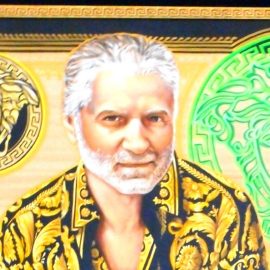
How did Sam Bankman-Fried get a job with Jane Street Capital? Why didn’t he stay with the firm longer?
Sam Bankman-Fried left MIT for Wall Street, taking a job with Jane Street Capital. In Going Infinite, Michael Lewis discusses Bankman-Fried’s hiring and success with the firm and reveals why the young trader didn’t stay there for the long haul.
Continue reading to learn why, for Sam Bankman-Fried, Jane Street wasn’t enough.
The Successful Wall Street Trader
For Sam Bankman-Fried, Jane Street Capital gave him a chance to put effective altruism into practice. Lewis writes that Bankman-Fried was invited to interview with the quantitative trading firm (along with two other firms) after submitting his résumé on a whim at MIT’s career fair. For his interview, the Jane Street traders had Bankman-Fried do nothing but play complex probability games (like variants of classical poker) with ever-changing rules. And, he excelled at them, demonstrating an intuitive understanding of how to play the games in a way that maximized his expected value.
(Shortform note: Interviews at quantitative trading firms, like Jane Street Capital, are notoriously different from standard interviews. Rather than asking them behavioral questions, quantitative trading firms require interviewees to complete an array of brainteasers, puzzles, and mental math exercises under strict time constraints. In theory, these interviews determine which applicants have the greatest aptitude for making mathematical decisions under time pressure, a key skill for quantitative traders.)
After graduating from MIT, Bankman-Fried accepted a full-time offer at Jane Street and worked there for three years. Lewis notes that Bankman-Fried was exceptional at his job. His superiors ranked him the best trader in his class, and, at the end of his third year, he was poised to earn a bonus of $1 million. Further, Bankman-Fried’s superiors told him that, in 10 years, he could expect to be earning, at minimum, $15 million per year.
(Shortform note: For the heads of quantitative trading firms, the work can be even more lucrative than Bankman-Fried’s potential $15 million per year—for instance, Jim Simons, the founder of quantitative trading firm Renaissance Technologies, is worth over $28 billion, according to Forbes.)
Nonetheless, Lewis reports that Bankman-Fried was unsatisfied at Jane Street, even though he was donating nearly all of his salary to effective altruism causes. According to Lewis, he realized it was unlikely that the position he’d taken on a whim at Jane Street was maximizing his value to the world, as effective altruism required.
Moreover, cryptocurrencies were booming in 2017, with a billion dollars of crypto traded daily, even though traditional trading firms like Jane Street wouldn’t touch them. So, Bankman-Fried realized that he could likely earn (and thus give) substantially more—by his estimation, potentially $1 million a day—by trading in the inefficient crypto market. For this reason, Bankman-Fried left Jane Street in 2017 to start his own quantitative cryptocurrency trading firm: Alameda Research.
| The Nature and Origins of Cryptocurrencies Cryptocurrencies are a form of digital currency that’s protected by cryptography, algorithms that generate public keys (similar to your bank account number) and private keys (similar to your bank password). Unlike forms of fiat currency (government-issued currency that isn’t backed by a commodity, like gold), which require consumers to trust the central government issuing the fiat currency, cryptocurrencies (in theory) don’t require trust in any human actors, as they instead depend on immutable cryptography. Further, cryptocurrency transactions are listed on blockchains, which are digital databases that record who owns which cryptocurrencies. Although the world’s first cryptocurrency, eCash, was invented in 1983, it failed to gain traction and was unsuccessful. It wasn’t until 2009 when a programmer under the pseudonym Satoshi Nakamoto invented Bitcoin that cryptocurrency entered the financial mainstream. Since then, the cryptocurrency market has been flooded with an array of “shitcoins” that have little value and are universally considered to be poor investments. |






